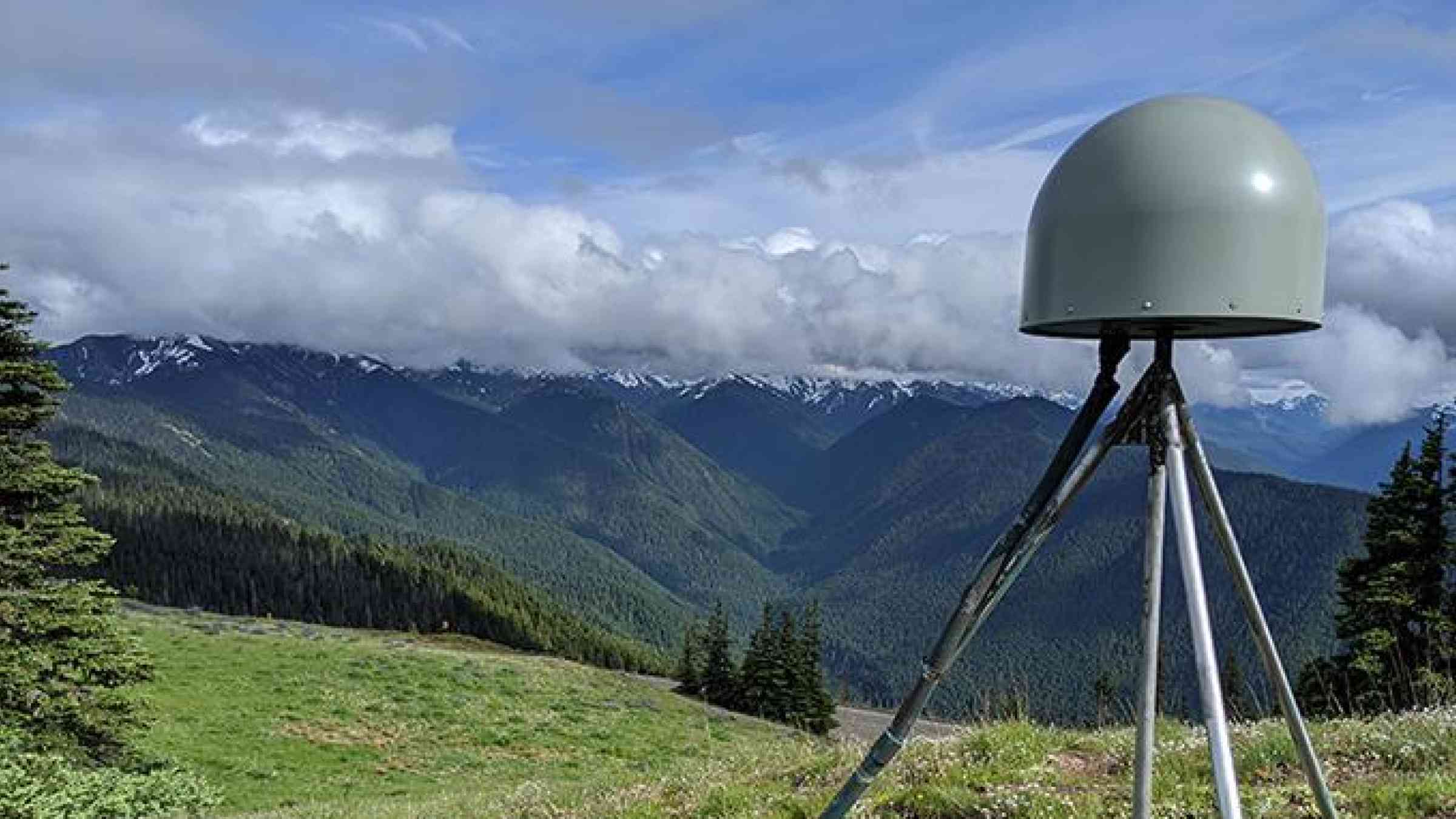Space-based system can provide seismic monitoring for large earthquakes, tsunamis

Researchers have developed a global earthquake monitoring system that uses the Global Navigational Satellite System (GNSS) to measure crustal deformation.
The monitoring system within seconds can rapidly assess earthquake magnitude and fault slip distribution for earthquakes of magnitude 7.0 and larger, making it a potentially valuable tool in earthquake and tsunami early warning for these damaging events, Central Washington University geophysicist Timothy Melbourne and colleagues report in the Bulletin of the Seismological Society of America.
GNSS can potentially characterize a large earthquake much more rapidly than the global seismic network, offering more time for evacuations, drop-and-cover and automatic shut-down of essential infrastructure. “The imperative for doing it quickly is really about saving lives,” said Melbourne.
GNSS systems consist of Earth-orbiting satellites that send signals to receiver stations on Earth. The signals are used to determine the receivers’ exact locations through time. Earthquakes move and deform the Earth’s crust underneath the receivers, so changes in their locations after an earthquake can be used to monitor and characterize the ruptures.
Seismic monitoring by GNSS is a “very blunt tool,” compared to seismometer-based networks capable of detecting minute seismic waves, Melbourne said.
A top-of-the-line seismometer is remarkably sensitive, he noted, able to detect seismic wave velocities as small as tens of nanometers per second.
GNSS is more coarse, only detecting displacements of centimeters or larger.
During a big earthquake, however, there is a trade-off between sensitivity and speed. Local seismic networks can be swamped with data during a large, complex event such as the 2016 magnitude 7.8 Kaikoura earthquake in New Zealand, where multiple faults are involved and waves from the initial event reverberate through the crust. To accurately determine magnitude and fault slip distribution, seismologists usually have to wait for the seismic wave data to reach distant stations before it can be accurately characterized, which involves tens of minutes of delay while the waves propagate across the planet.
The global system created by Melbourne and his colleagues is the first of its kind. It takes in raw GNSS data acquired at any Internet-connected receiver on Earth, positions these data, and then re-transmits the positioned data back to any Internet-connected device, within a second.
The researchers assessed their system over one typical week, using data from 1270 receiver stations across the world. They found that the average time it took data to travel from a receiver to the processing center at Central Washington University was about half a second—from anywhere in the world. It took an average of about one-200th of a second to convert that data into estimates of GNSS position.
This means that the GNSS global monitoring system can detect changes well before the earthquake itself is done rupturing, since it can take tens of seconds—or even minutes for the largest earthquakes—“for the fault to unzip and radiate all that energy into the planet,” Melbourne said.
The speed of a global GNSS seismic monitoring system might be even more important for tsunami warnings, he noted. At the moment, an international monitoring program uses data from a global seismic network to determine an earthquake magnitude, combined with data from global tide gauges and buoys that detect a tsunami wave in the open ocean, to determine whether a tsunami advisory should be sent to the public.
The seismic network could take 15 minutes or more to determine the magnitude of an earthquake that causes a tsunami, said Melbourne, and the tidal gauges and buoys could take up to an hour to deliver data, depending on their proximity to the earthquake. GNSS receivers, on the other hand, could characterize an earthquake in tens of seconds with sufficient nearby stations.
“The real power of the GNSS for the tsunami is buying more time and greater accuracy from the get-go for the warnings that come out,” Melbourne said.
GNSS receiver stations are proliferating around the world as more people use them, especially for surveying or monitoring in mining and construction. But the global GNSS monitoring system depends on open-source data, which has not expanded at the same rate. In some countries, data are sold to recover the costs of constructing and maintaining the receivers, Melbourne said, making their operators reluctant to make the data freely available.
“Part of what I do is trying to get countries in seismically active areas to open up their data sets for hazard mitigation purposes,” said Melbourne.
For instance, GNSS operators in New Zealand, Ecuador, Chile and elsewhere partner with Melbourne’s group, benefiting from the decade of work that the team has put into their GNSS positioning system. They send raw data from receivers in their countries to Central Washington, where Melbourne and colleagues position the data within a global reference frame and send it back within subseconds for further research and monitoring.